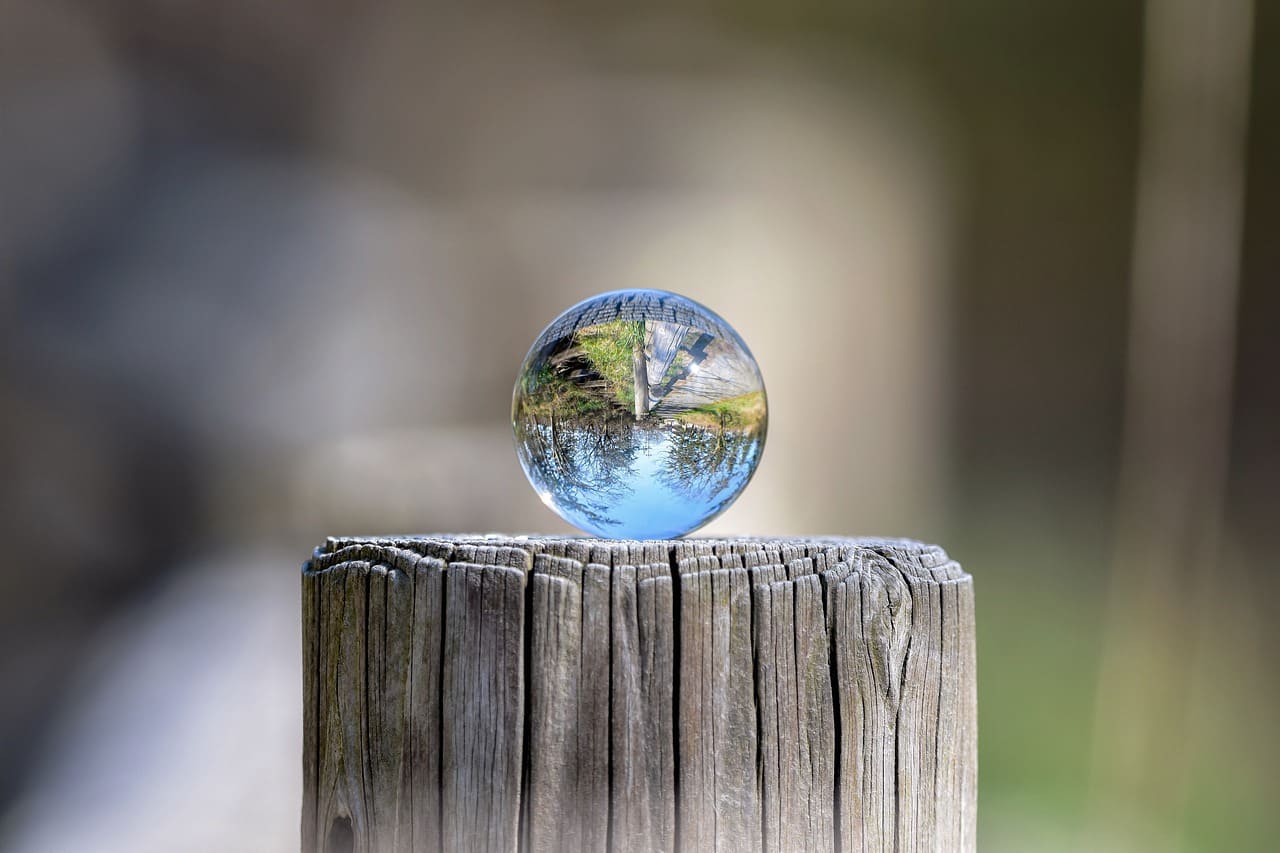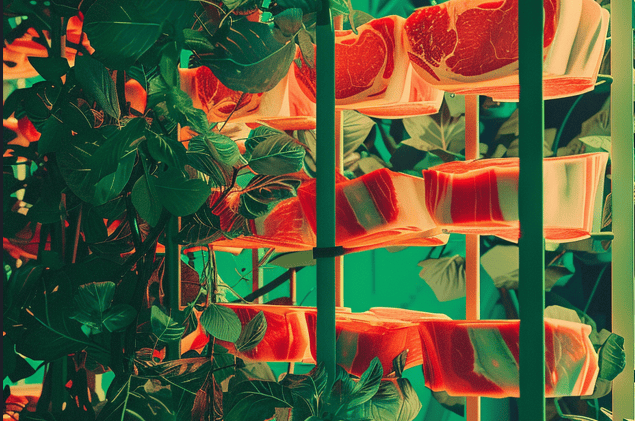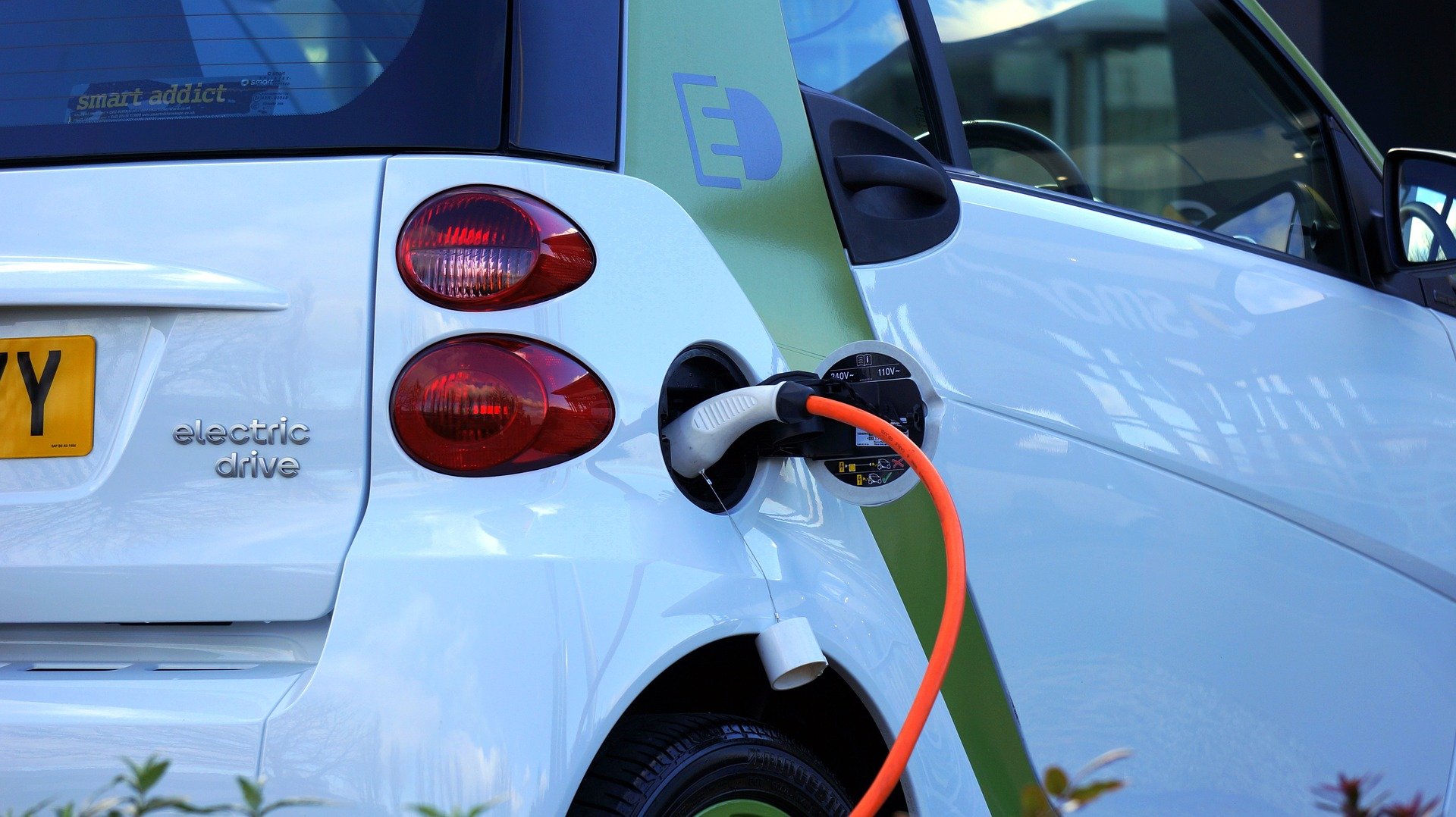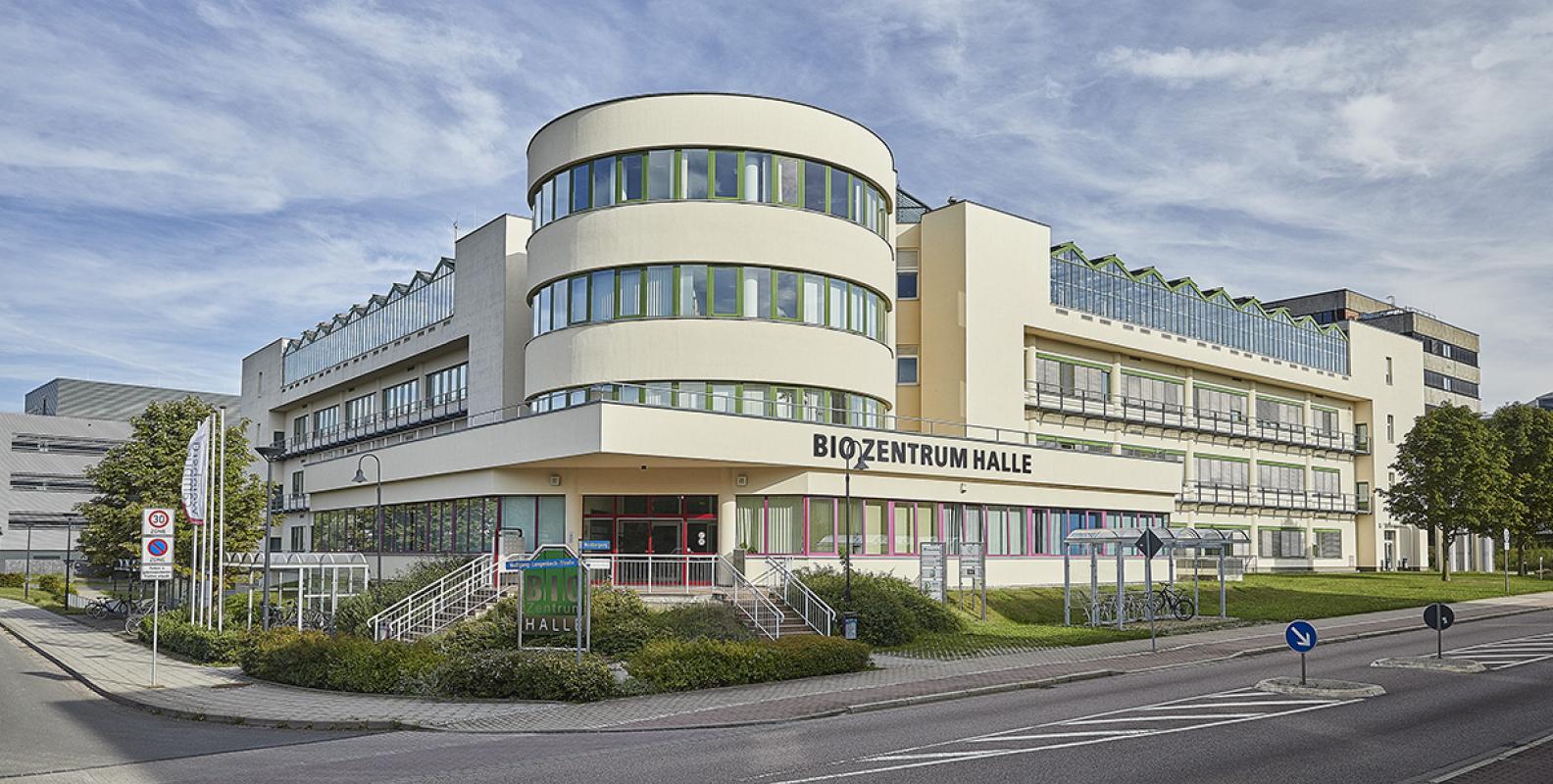
In Germany this summer, you can travel on regional public transport for 9 euros per month. Innovation Origins is seizing this opportunity to visit a number of future-proof projects. In this edition, we travel to Halle an der Saale.
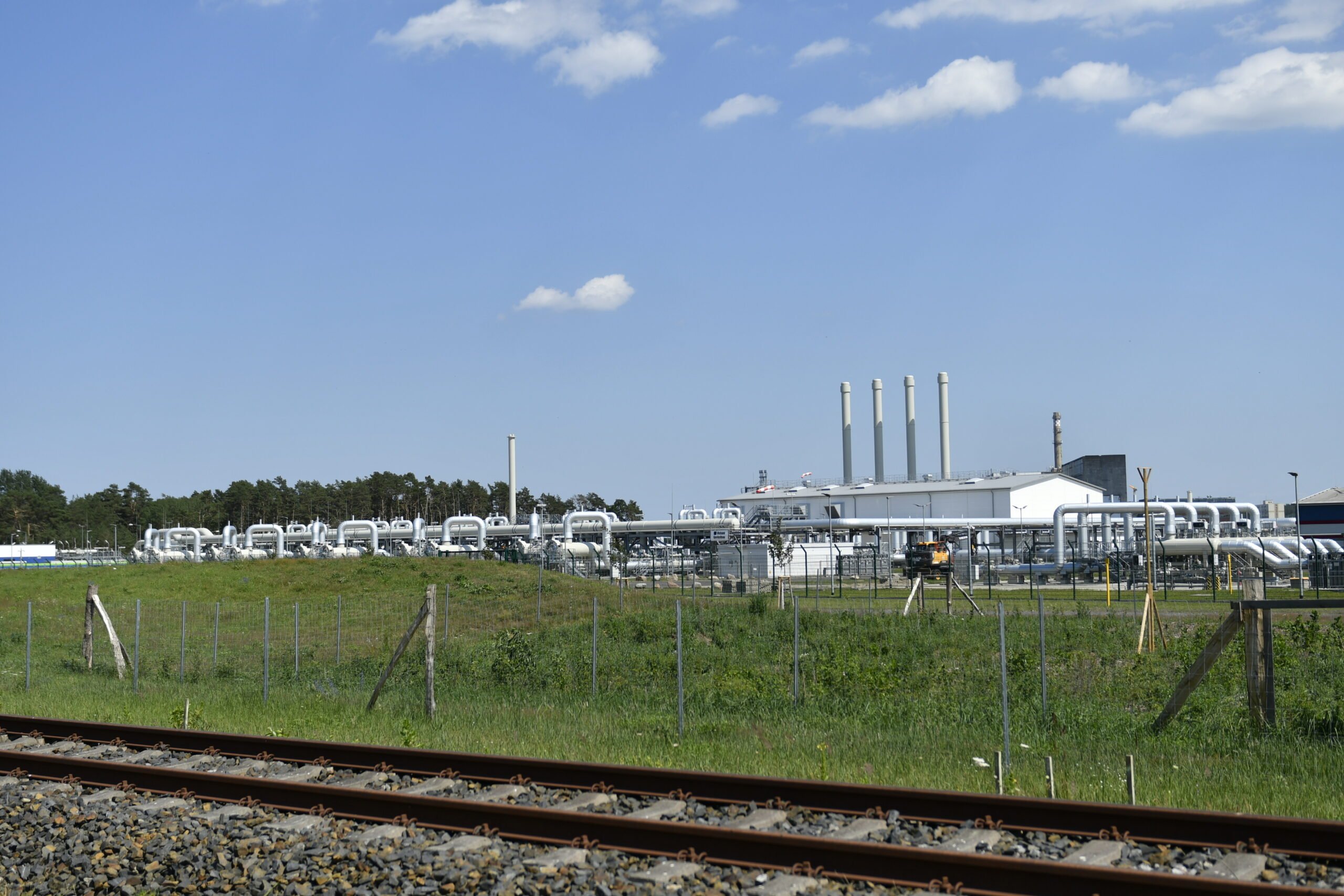
From the rooftop, we have an excellent view over the Technology Park Weinberg Campus in Halle. Bert-Morten Arnicke is giving us a tour of one of the fastest growing knowledge parks in Germany today, which focuses on biochemistry, biotechnology and materials science.
On the horizon, the factory pipelines of Buna and Leuna are clearly visible, two cities that are part of what is known as the “Chemiedreieck” (the Middle German Chemical Triangle).Halle and the entire region suffered severely from this during the GDR years.
“When the wind blew the wrong way, the whole town was covered in a thick yellow smelly haze,” a woman told me on the train earlier that day. It was not only because of the factories, but also because of the numerous brown coal mines in the region. “But I’m still alive,” she added. “And I had quite a nice childhood. For us, industrial sites and quarries were a playground.”

The Middle German Chemical Triangle
The Middle German Chemical Triangle still exists today and connects the cities of Halle, Merseburg and Bitterfeld. The factories are just not as dirty as they were in the GDR era. “The chemical industry settled here early on in the last century,” says Arnicke. From 1916, for example, in Leuna, BASF started producing synthetic ammonia from nitrogen and hydrogen for the war industry. This was necessary because Germany was no longer able to import saltpetre from Chile for ammunition.
They lost the war, but the chemistry remained. The region on the border of the three states of Brandenburg, Saxony and Saxony-Anhalt was ideally located because of its huge reserves of lignite (for combustion) and the presence of a number of rivers. Later, the region became a centre for all sorts of plastics and refineries. Well-known companies today include Dow Chemical, TotalEnergies, BASF, Linde, AkzoNobel, Bayer, Degussa, Lanxess and Heraeus.
Next week, more on the transformation of this region, where decommissioned brown coal mines are being given a new lease of life and the “solar valley” is trying to make a new start.
The Russians
Also noticeable from the rooftop are the strikingly large number of barracks-style buildings. “Some of them date back to Nazi times,” Arnicke explains. “They were used as training centres for the army.” The buildings are very similar to the famous Berlin airport Tempelhof, which is not surprising as they share the same architect: Ernst Sagebiel. After the Second World War, the German army made way for the Russian one, which housed a large base in Halle with around 9,000 soldiers.

But by 1991, it was “schluss” (over and done with) and many buildings were left in a bad state. For the technology park, however, that was the start of something wonderful. “The Martin Luther University Halle-Wittenberg (MLU) was already located close by and has been gradually occupying more and more buildings over the years,” Arnicke tells us.
Moreover, even during the time of the GDR, Halle had a great reputation in the field of plant breeding and microtechnology. Two institutes from that time were renamed the Leibniz Institute of Plant Biochemistry (IPB) and the Max Planck Institute of Mikcostructure Physics (MPI).
Fraunhofer, Leibniz, Helmholtz and Max Planck
And it did not stop with these two knowledge institutes. These were to follow later:
- Fraunhofer Institute for Microstructure of Materials and Systems (IMWS)
- Fraunhofer Center for Silicon Photovoltaics (CSP)
- Fraunhofer Institute for Cell Therapy and Immunology (IZI)
- Leibniz Institute of Agricultural Development in Transition Economies (IAMO)
- Helmholtz Centre for Environmental Research (UFZ)
Anyone who knows Germany a little knows that the presence of one Fraunhofer, Max Planck, Helmholtz or Leibniz institute alone can boost the regional economy. Especially when you have as many as there are in Halle.

mRNA vaccines
We cycle on through the park. At a large construction site, Arnicke tells us that this is where the latest breakthrough in the science park is coming to fruition. Wacker Biotech – a subsidiary of Bavarian company Wacker Chemie – is building a brand new factory and an R&D centre for vaccines that are based on what is known as messenger RNA (mRNA).
This is a technique that has gained a lot of publicity over the past couple of years due to Covid-19, but work is also being done on cancer mRNA vaccines, among other things. In the event of any future pandemics, Arnicke believes that Wacker will be able to get on with the job. Purchase of these vaccines is more or less guaranteed by the German government.
“For us, it is a sign that we are entering the next phase with the technology park where start-ups can grow into global players.” In fact, the technology that Wacker will be working with was developed by a local Halles-based company that stemmed from the university: Scil Proteins, which was acquired by Wacker in 2014.

Start-ups
It is not the only example of a successful start-up, but it is the biggest. Another promising company is Icon Genetics, which breeds enzymes (proteins) in plants for medicinal use, including to treat Ebola. “A large trial is currently being held with tobacco plants,” Arnicke says pointing upwards. The lights are clearly visible from the road. Icon Genetics has been part of the Japanese Denko Group for several years now.
Another development that Arnicke is proud of is the increasing interchange between knowledge institutes, companies and the University Medical Centre of Halle. For one thing, they are working hard on developing novel treatments for dementia and cancer.
7,000 employees and 8,000 students
Today, about 7,000 people work at the research centres and approximately 100 companies on the 134-hectare technology park. In addition, the University Hospital employs almost 4,000 people and the university boasts more than 8,000 students.
One of the newest buildings on the campus has been specially designed as an incubator for start-ups. Well, the building looks new, but it has actually been renovated and serves as an office and a place for lectures and presentations for investors. In addition, young entrepreneurs are supported here in all sorts of substantial ways.
Arnicke: “Since the very beginning, about 300 companies have been set themselves up in the park. They vary in size. We cycle past one of the oldest companies on the campus, ECH Elektrochemie, which specialises in measuring equipment for laboratories. “A niche player, but one that has been globally successful for years.”

The researchers
When it comes to start-ups and research, Arnicke says there are plenty of fascinating stories to share. Professor Robert Paxton, for example, is researching the role of parasites in bee mortality; Karsten Mäder is working on the transport of medicines through the body; and the American Stuart Parkin is working on new experimental forms of data storage.
What could be improved? According to one of the professors on the website, there are still not enough meeting places on campus where people can get together in an informal setting and discuss their work with colleagues. That is a pity, because meetings like that can provide surprising new insights.

Händel, Genscher and the Reformation
Fortunately, however, the old town of Halle offers plenty of opportunities for meetings and leisure time. The campus is located at the outskirts of town, next to Halle Neustadt, a typical new housing estate from the 1960s which was very modern for its time, then fell into disrepair, and is now slowly becoming trendy again as many of the buildings have been or are being renovated. Nevertheless, the old town on the Saale river remains the favoured residential area.

It also has much to offer tourists, for example, the birthplace of the composer Georg Friedrich Händel, the market square featuring the beautiful Church of St. Mary and the Moritzburg Art Museum, where Cardinal Albrecht von Brandenburg used to reside at the beginning of the 16th century.
At the time, Albrecht was the most powerful ecclesiastical leader in the Holy Roman Empire after the Pope and the main opponent of Martin Luther, the founder of the Reformation and Protestantism, who lived a short distance away in Wittenberg.
Hans-Dietrich Genscher was also born in Halle, the former German foreign minister who played an important role in bringing down the Berlin Wall.
The university of universities
Opposite the Moritzburcht, you will find what is probably the most prestigious knowledge institute in Germany. It is also known as “the university of universities“, the German National Academy of Sciences Leopoldina (formerly the Akademie der Naturforscher).
Founded in 1652, it is the oldest scientific society still in existence, where the best minds from Germany and the rest of the world meet regularly (not all at the same time) to debate the major global issues and advise the government.

According to a spokesperson, the institute has 1672 members at present. The idea behind it is that the scientists contribute their knowledge and research data from various disciplines in order to be able to come up with the best possible advice.
For example, the institute took on an important role during the corona crisis. Other important themes include climate change, demography, the global food supply, genetics, digitalization, the energy transition and global health.
Albert Einstein and Marie Curie
These scientists are not just a random bunch of people. They are the most renowned researchers in their field. For example, since 1901, 184 Nobel Prize winners have been or still are members of Leopoldina, 40 were awarded a Nobel Prize for Physics, 67 for Chemistry, 76 for Medicine and two for Peace.
One well-known member from the Netherlands is Ben Feringa (Nobel Prize in Chemistry). He is one of the twelve Dutch members. Some of the prominent figures from the past include: Albert Einstein, Marie Curie, Niels Bohr, Ivan Pavlov and Max Planck.




